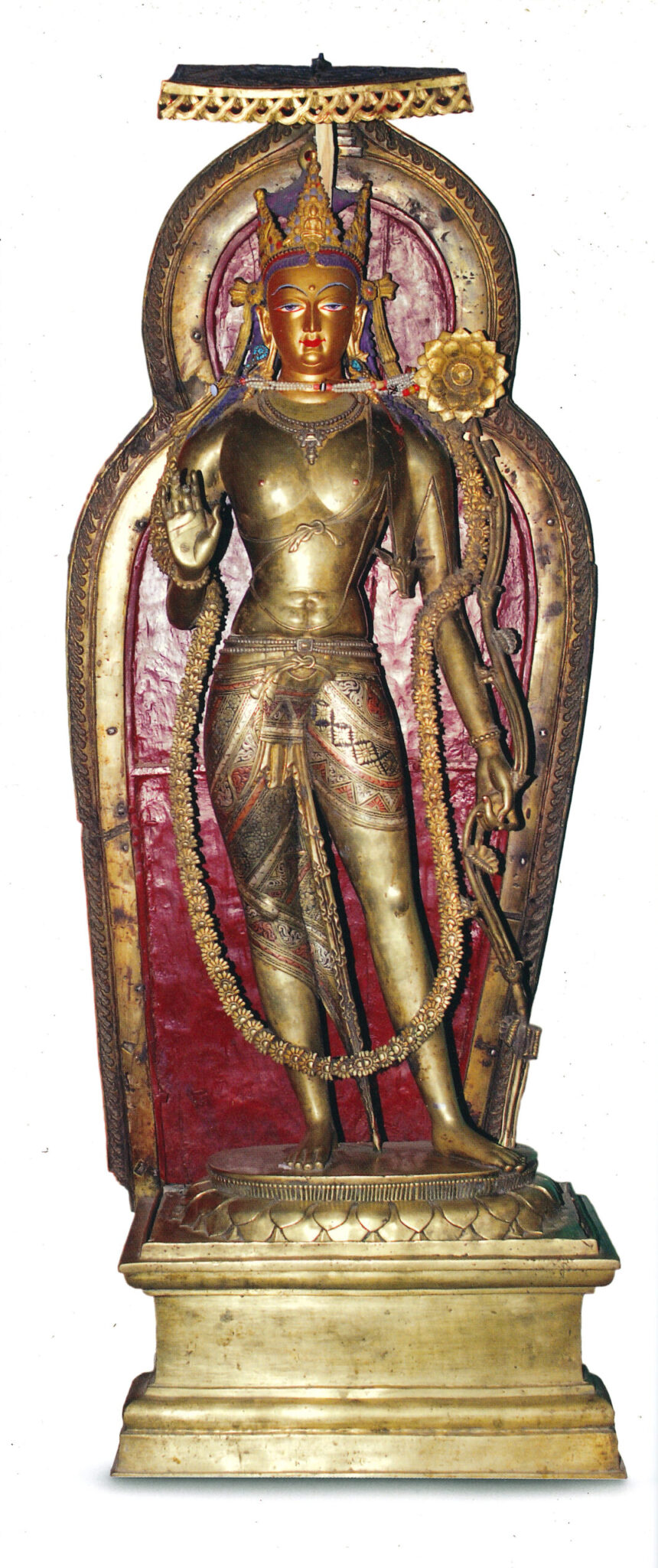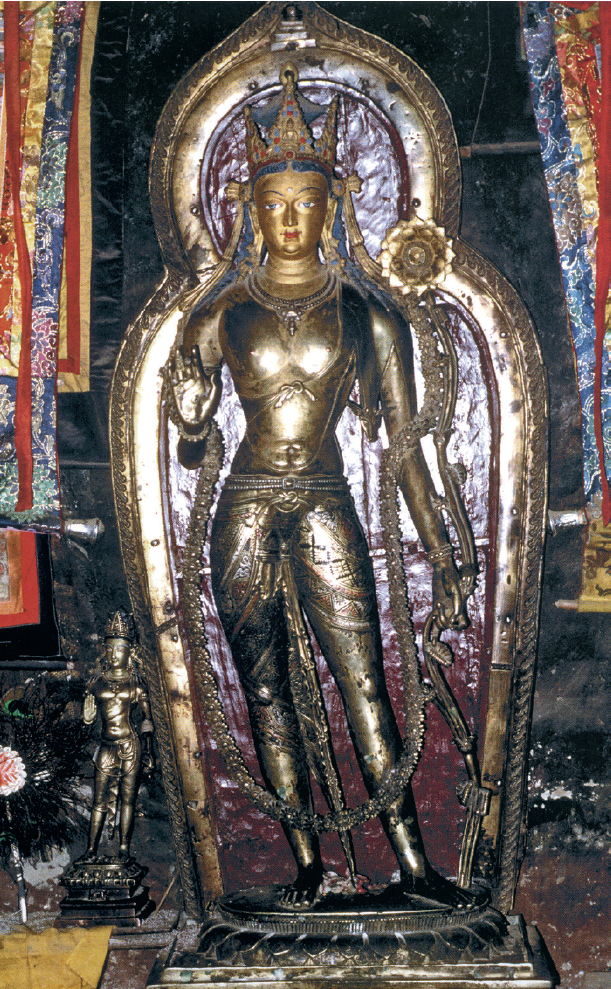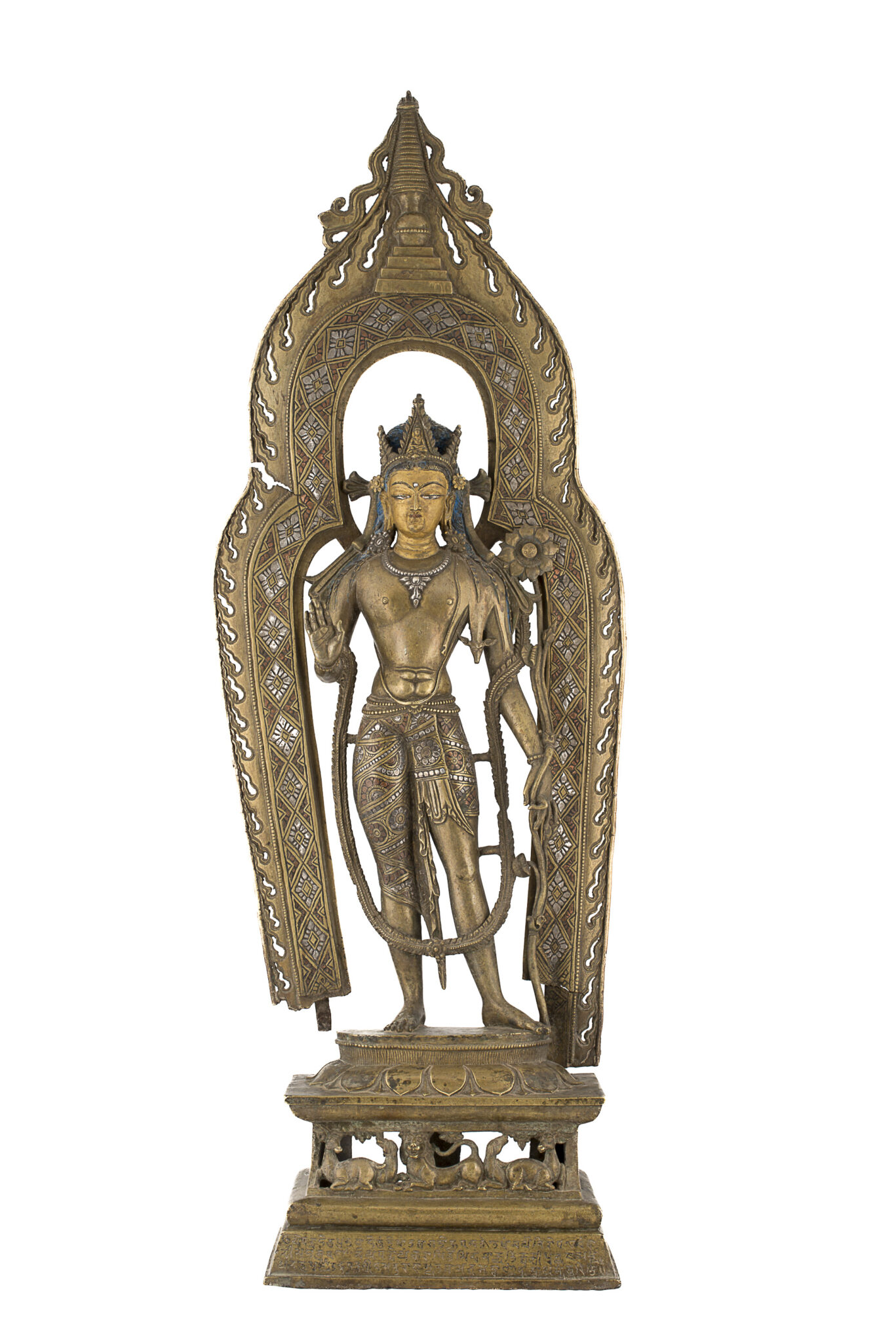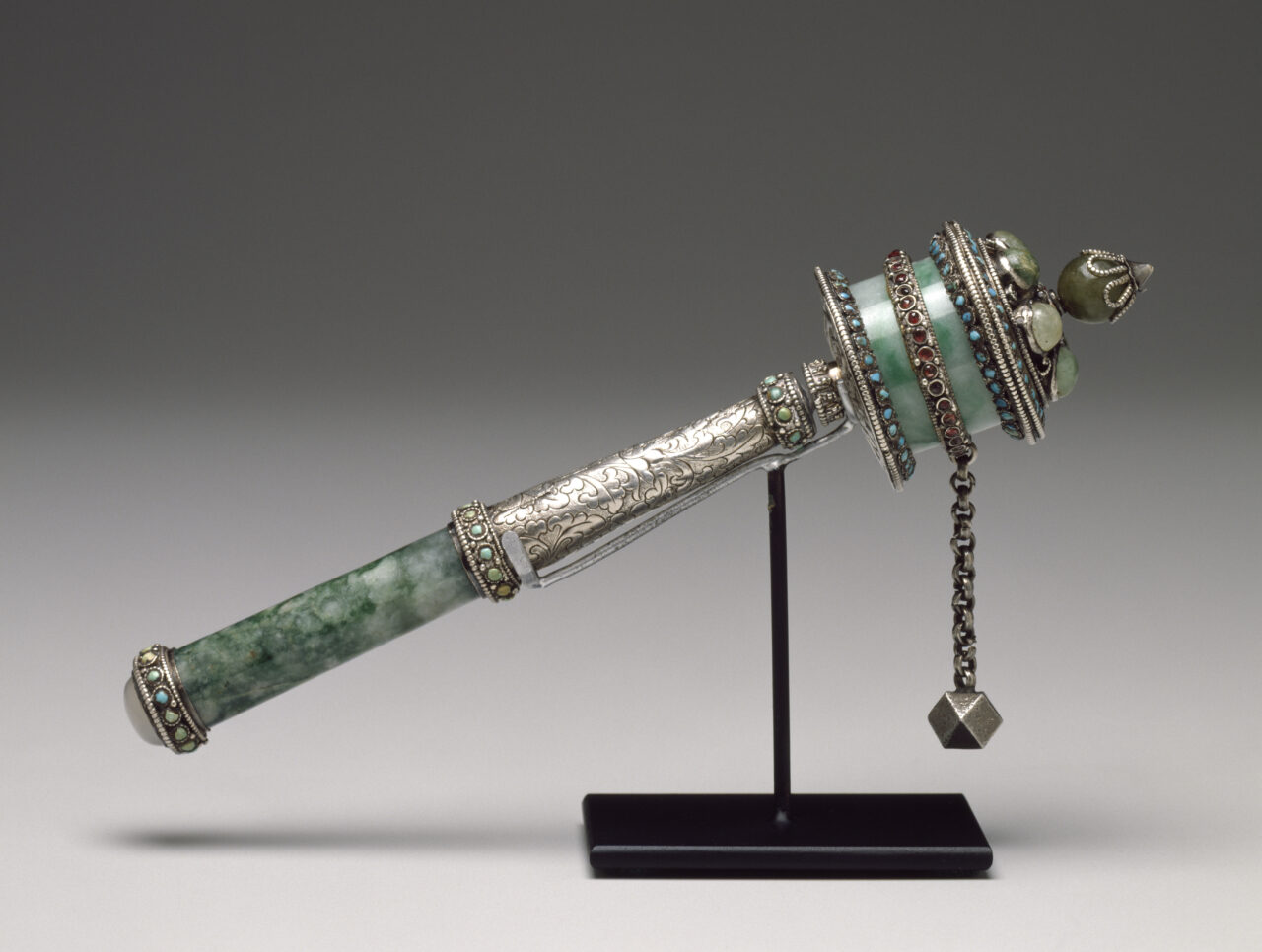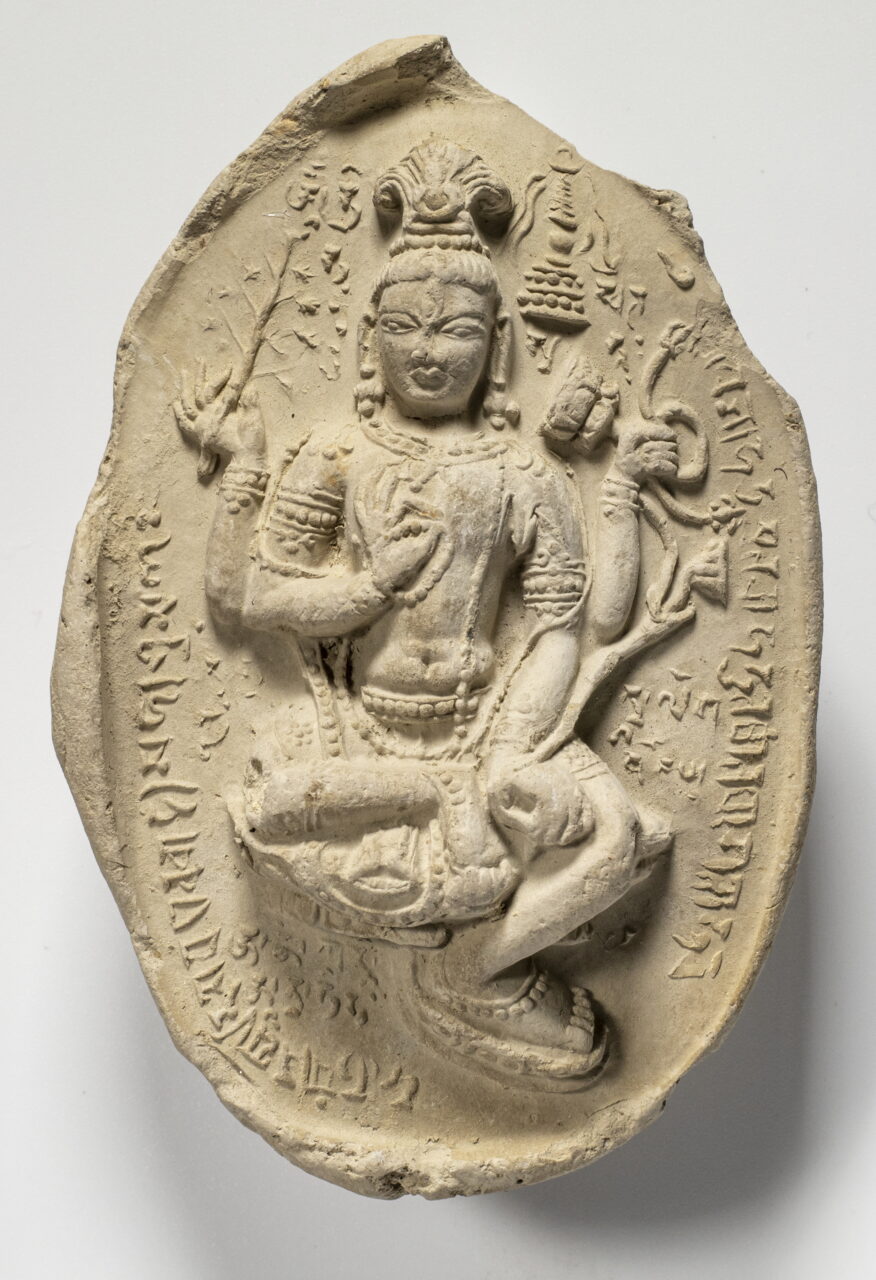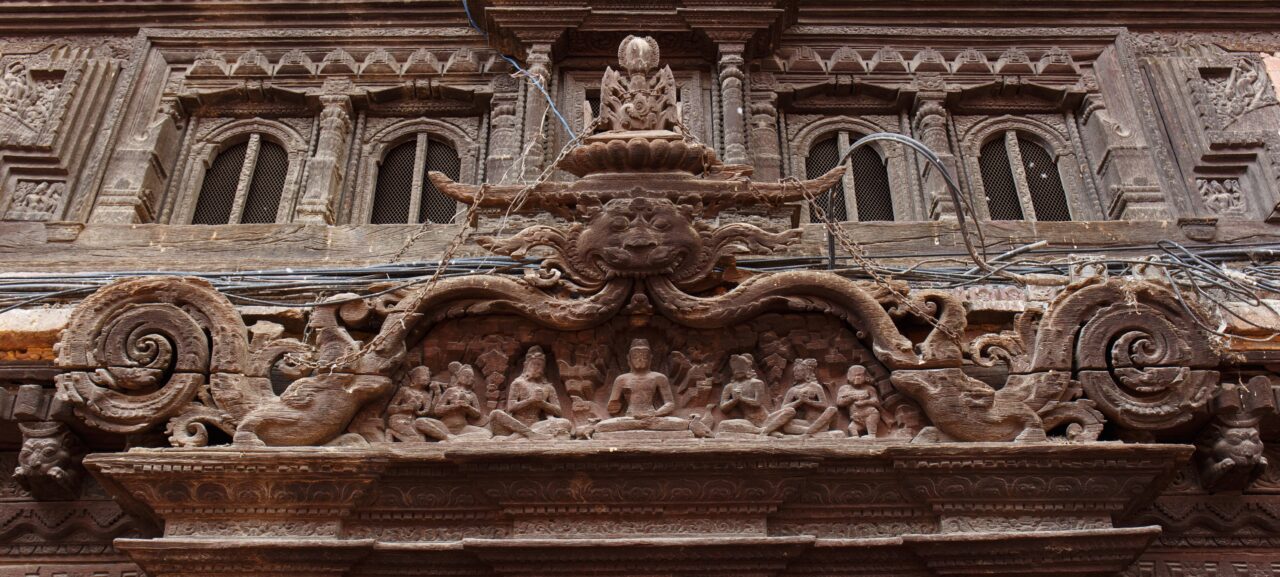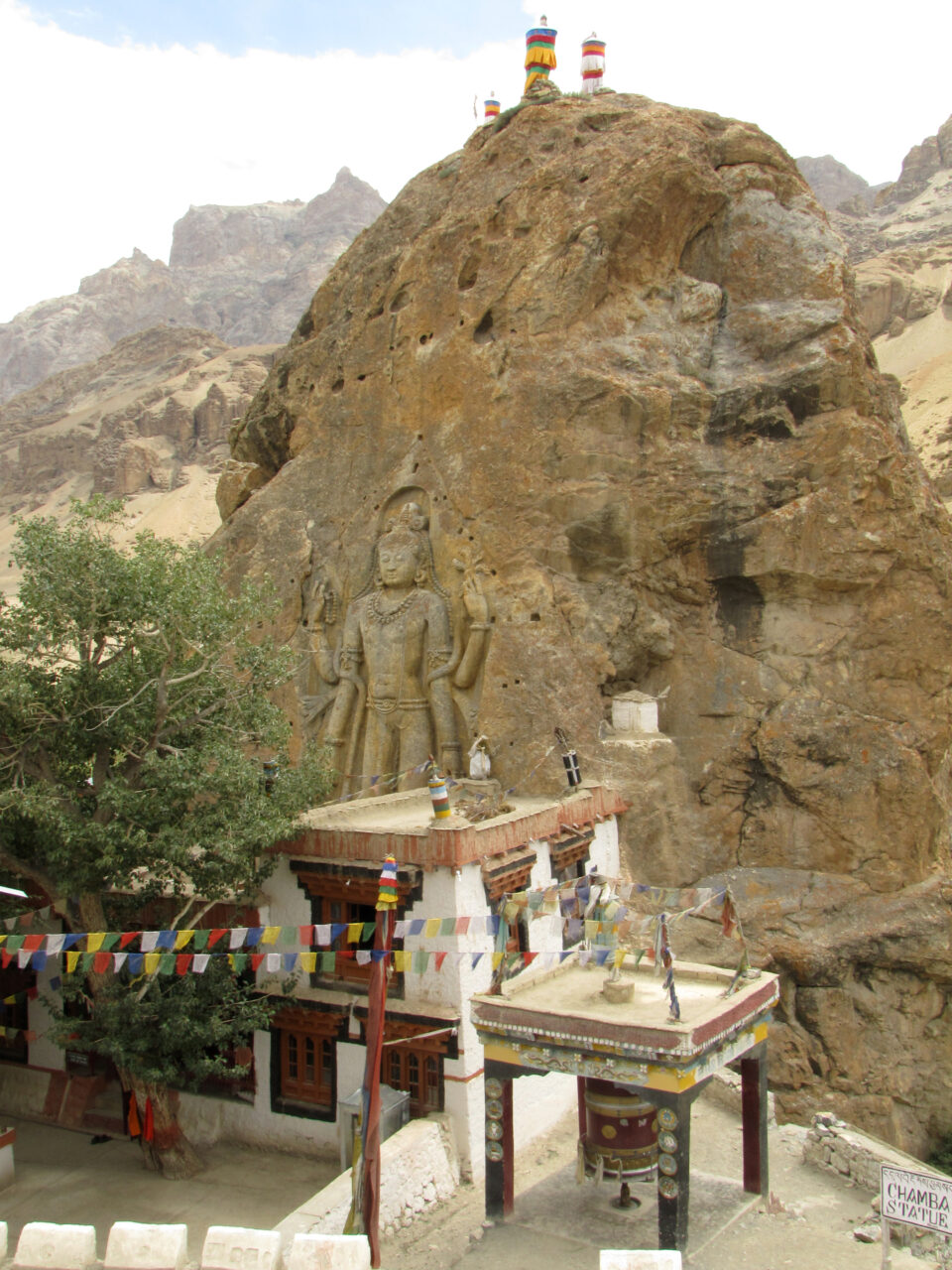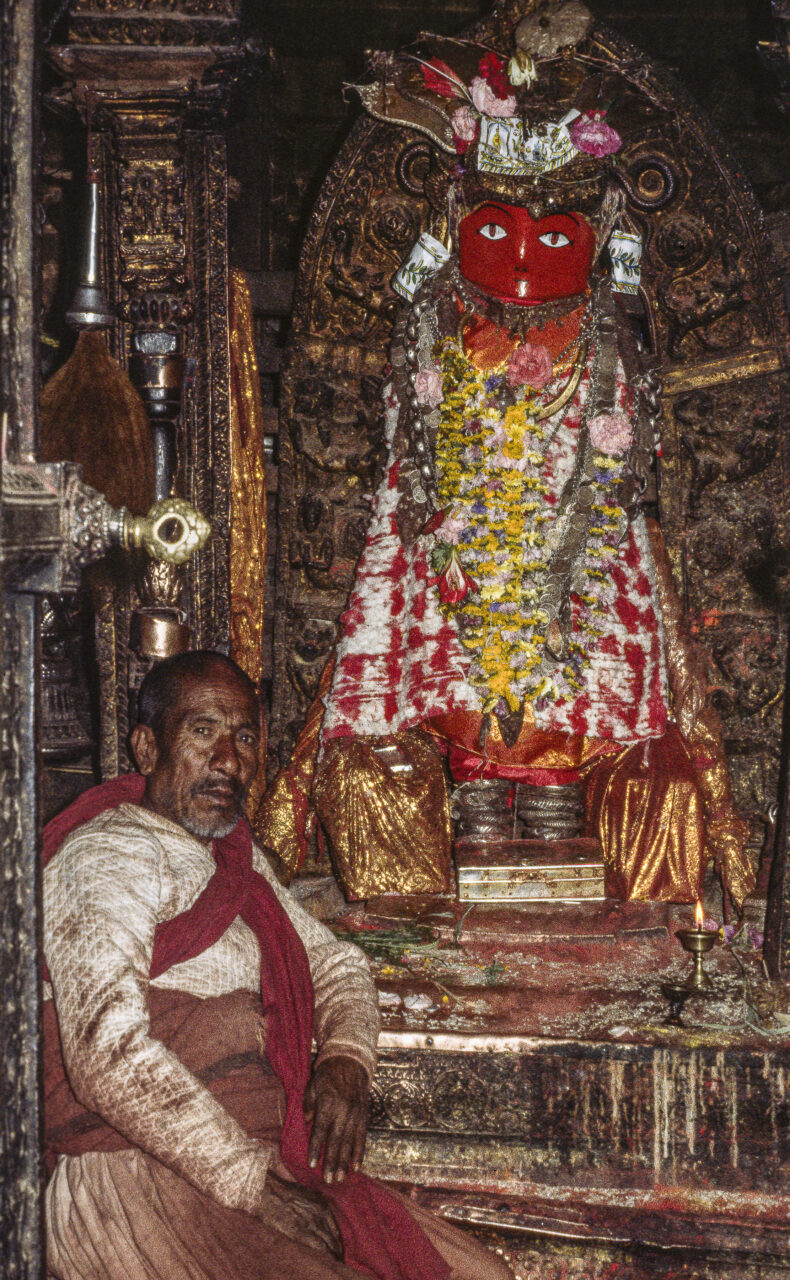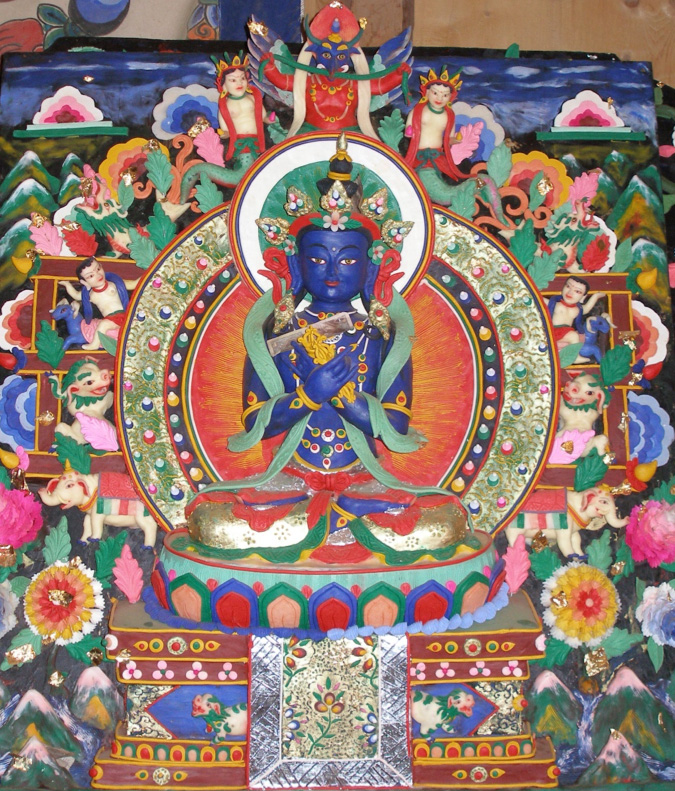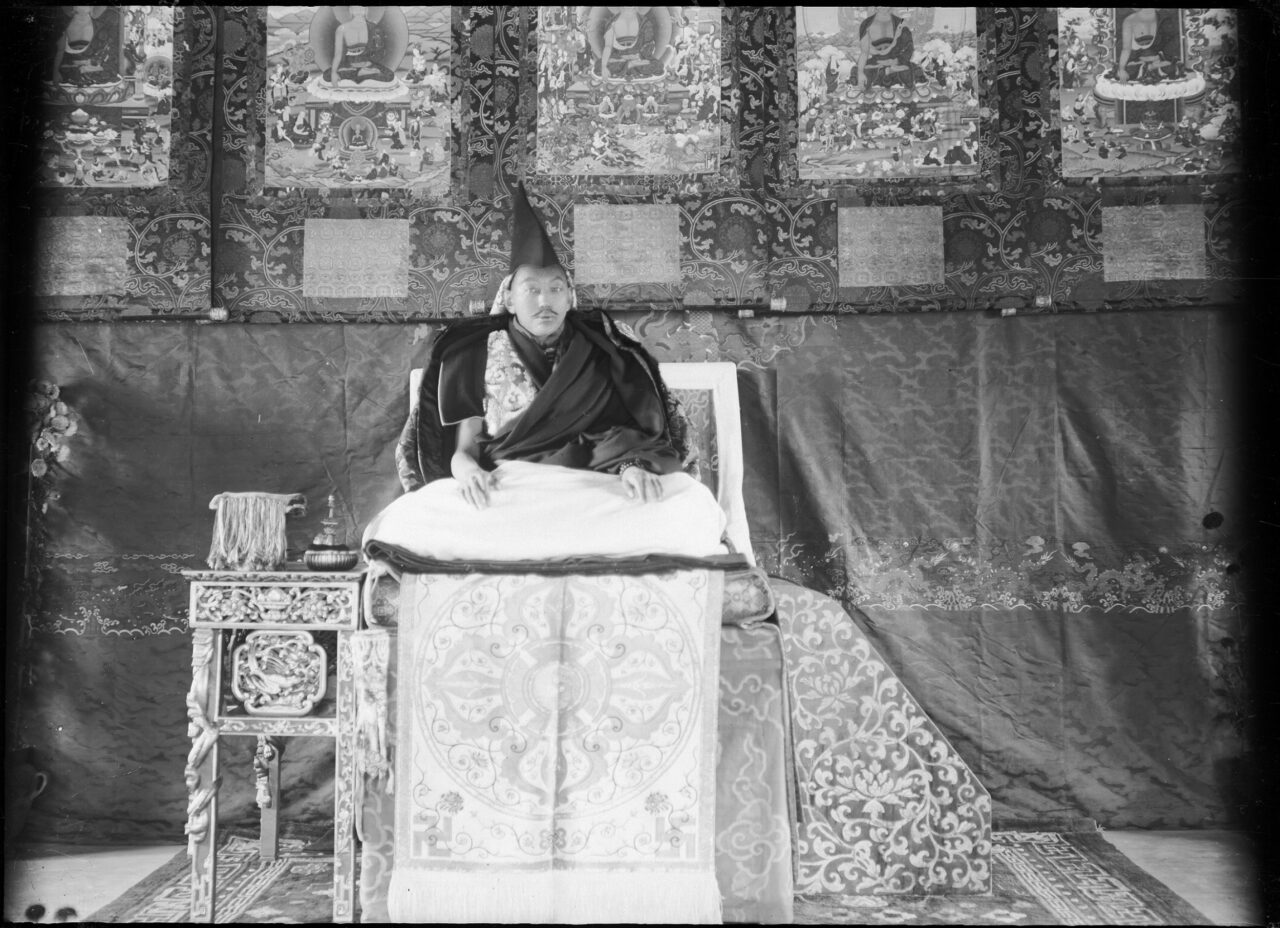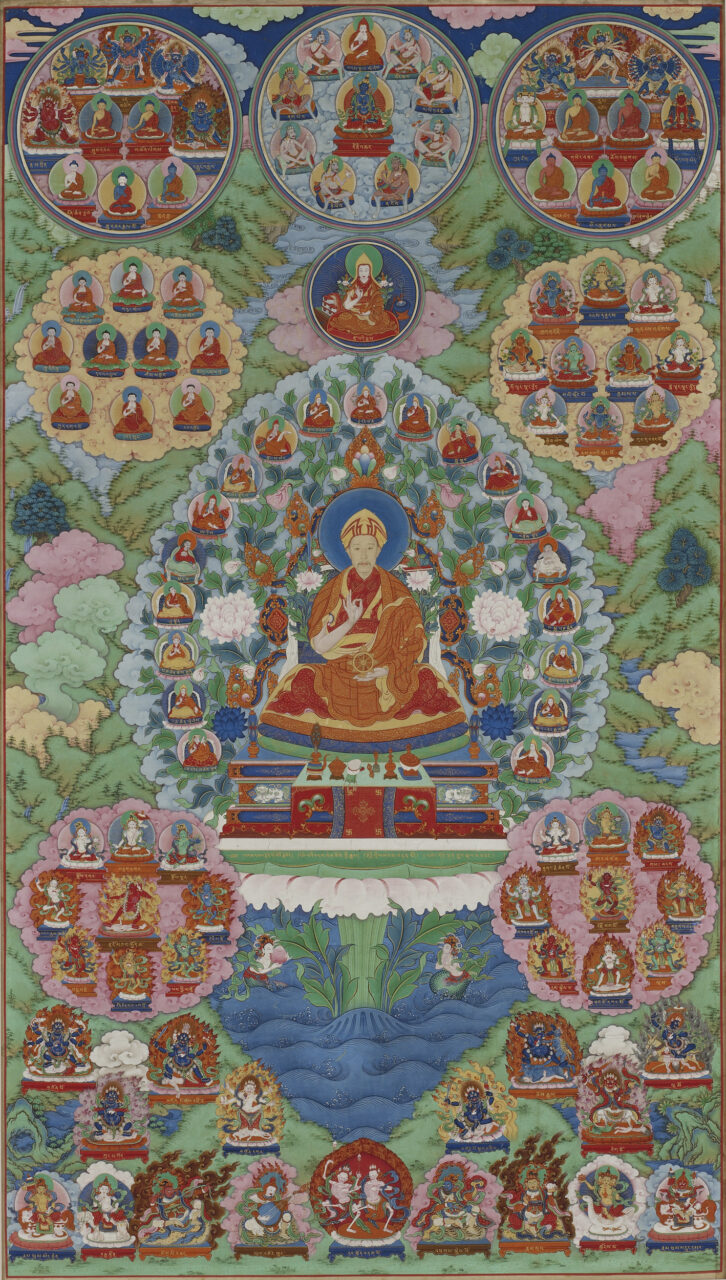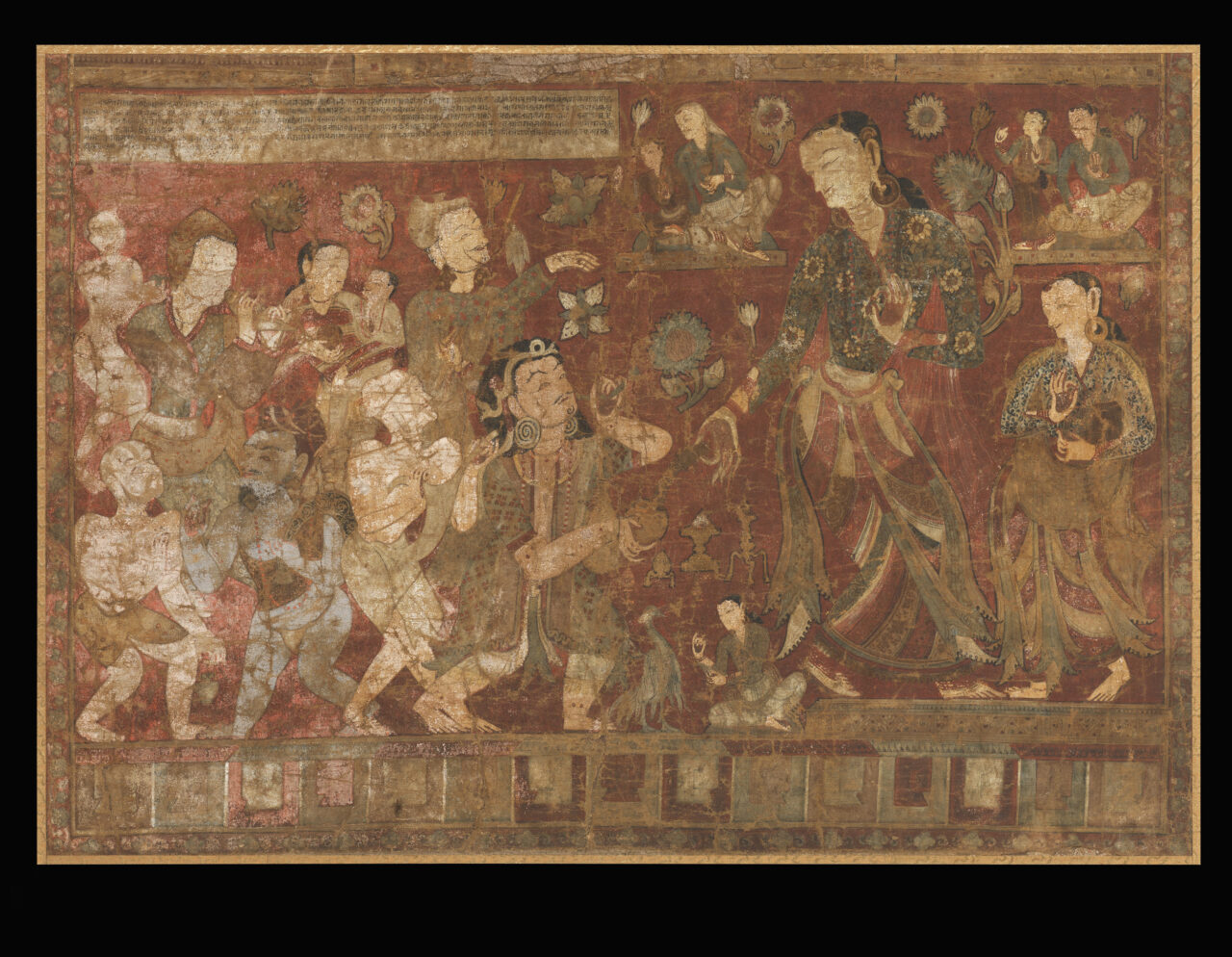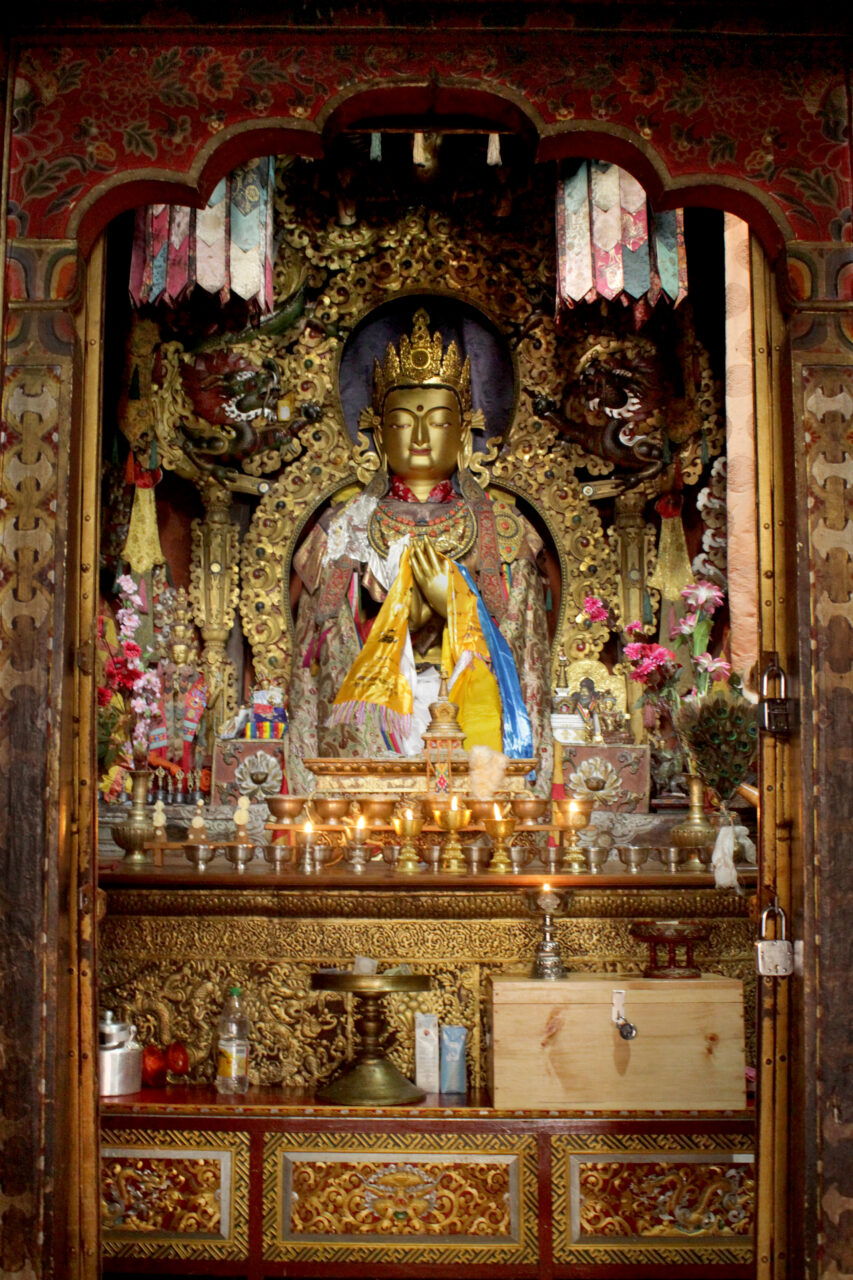In Buddhism, a bodhisattva is a being who has made a vow to become a buddha or awakened. In the Mahayana and Vajrayana traditions, many bodhisattvas are understood as deities with enormous powers who delay their final enlightenment, remaining in the phenomenal world to help suffering beings. Among such great bodhisattvas are Avalokiteshvara, Manjushri, Vajrapani, and Maitreya.
A dhoti is a traditional Indian lower-body garment for men, made of a cloth wrapped around the waist and tucked through the legs from the back.
Inlay is a decorative technique of creating a depression in a surface and then filling it with some other material. Metal can be inlaid with precious stones or glass, or more precious forms of metal, for instance, brass inlaid with silver and copper. Wood can be inlaid with silver, or other metal and conch. Tibetans tend to favor turquoise inlay while the Newars employ a range of colored glass and semi-precious stones.
In Buddhism, merit is accumulated positive karma, or positive actions, that lead to positive results, such as better rebirths. Buddhists gain merit by reciting mantras, donating to monasteries and those in need, performing pilgrimages, commissioning artworks, reproducing and reciting Buddhist texts, and other deeds with good intentions. It is believed that merit can also be transferred to others through rituals performed to gain merit for deceased family members help them achieve a better rebirth. Merit making is an important motivation for positive ritual action, and is a prerequisite for success of religious and even secular activity.
In Buddhist philosophical thinking, pratityasamutpada is an explanation of the continuous processes of causation that create the cycle of rebirths. A simple explanation of pratityasamutpada is that no thing or thought exists eternally and of itself; everything that exists arises in dependence on causes and conditions, and passes away, producing further effects. Buddhist logic posits twelve links in this cycle of causation, beginning with ignorance and ending with death. These links are depicted as the outer circular band in the Wheel of Life paintings.




